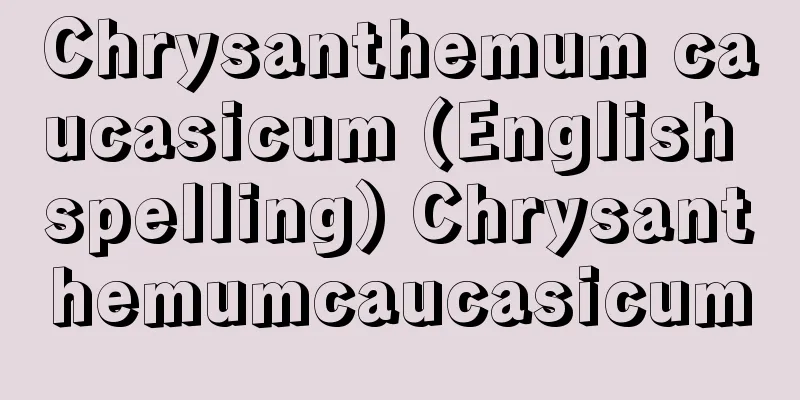Ishikawa Goemon

|
Year of death: Bunroku 3.8.23 (1594.10.7) Year of birth: Unknown A thief who was boiled in a cauldron at Sanjo-gawara in Kyoto during the Azuchi-Momoyama period. Both father, son and subordinate were executed. The fact that he was a thief who caused a sensation in his time and that he was boiled in a cauldron have fostered various stories in the imagination of the people in later times, with these two points at the core. The fact that the country had already shifted from Toyotomi to Tokugawa allowed for the free expression of fantasies, and Ishikawa Goemon was seen as a man of action with great ambitions who plotted to overthrow the country. He is also said to have been the head of a school of thieves. In Joruri, there was already a five-act "Ishikawa Goemon" before the Genroku period, and important works also appeared in Kabuki plays. "The view of spring is worth a thousand gold coins. Goemon's eyes are worth ten thousand ryo," Goemon says as he appears on the top of the tower of Nanzenji Temple, to the lord Hideyoshi, in Kabuki (Kinmon Gozan Kiri). The boiling in the pot has been made into a rakugo story, a senryu poem, and a novel (Ihara Saikaku, Honcho Nijuu Fuko, vol. 2, no. 1), and it has also become the name of an iron bathtub called Goemonburo, which has remained a part of the daily life of Japanese people from the end of the Edo period through the Meiji, Taisho, and Showa periods to the present day Heisei period. The flat board under the iron bathtub is a metaphor for Goemon having stepped on a child. In the Taisho period, Goemon Shoken made Goemon the protagonist of a novel, and in the postwar Showa period, Dan Kazuo made Goemon the protagonist. Koken, a successor to socialist thought, had Goemon say, "Oysters are oysters," showing the beginnings of a way of thinking that would deny ownership of natural things and completely overturn the legal system. As the senryu poem "Goemon recited a poem when he was raw" says, Goemon is said to have recited this last poem as he was being boiled in a pot: "Even if the sand on the river and the beach runs out, the seeds of thieves will never run out in this world," and this too is often quoted in everyday life today. (Tsurumi Shunsuke) Source: Asahi Japanese Historical Biography: Asahi Shimbun Publications Inc. About Asahi Japanese Historical Biography |
|
没年:文禄3.8.23(1594.10.7) 生年:生年不詳 安土桃山時代に京都三条河原で釜茹でにされた盗賊。親子部下ともに死刑となった。同時代をさわがせた盗人であったことと,釜茹でにされたことの2点を核として,のちの時代の民衆の空想がさまざまの物語を育てた。すでに天下が豊臣から徳川に移っていたということが,空想を自由に発表することをゆるし,石川五右衛門は天下をくつがえそうとたくらむ大望をいだく行動家とされた。また泥棒学校の主宰者ともいう。浄瑠璃では元禄以前にすでに五段構成の「石川五右衛門」があり,歌舞伎劇にも重要な作品があらわれた。「春のながめはあたひ千金とはちひさなたとへ。五右衛門が目からはこのあたひ万両」と天下様秀吉を相手に南禅寺の楼閣上でみえをきる五右衛門を,歌舞伎は今日までつたえている(「金門五山桐」)。釜茹でのほうは,落語や川柳にされたり,小説となったり(井原西鶴『本朝二十不孝』2ノ1),それだけでなく,五右衛門風呂という鉄製の浴槽の名となって,江戸時代の末から明治大正昭和をへて平成の現在に至るまで,日本人の日常生活に姿をのこしている。鉄の浴槽の下に平たい板をふみしくのは,五右衛門がこどもをふみしいたことの見立て。 大正時代には上司小剣,昭和戦後には檀一雄が小説の主人公とした。社会主義思想をうけつぐ上司小剣は,おさない五右衛門に「かきはかきのかきじゃ」といわせて,自然のものへの所有権を否定して法の体系を根本からひっくりかえす考え方の萌芽を示した。「五右衛門はなまにへの頃一首よみ」と川柳にあるように,彼は釜茹でにされるに当たって「石川や浜の真砂は尽きるとも 世に盗人の種子は尽くまじ」という辞世をよんだと語りつたえられており,これもまた今日しばしば日常の生活に引用されていきている。 (鶴見俊輔) 出典 朝日日本歴史人物事典:(株)朝日新聞出版朝日日本歴史人物事典について 情報 |
Recommend
Anchor beetle
A species of the family Cicindelidae in the order ...
Demeter - Demeter (English spelling)
The Greek goddess of grain. Meter means "mot...
Vesperbild
...This is one of the so-called "Andachtsbil...
Pump - Pomp (English spelling) pump
A device that receives mechanical energy from an ...
Pseudolysimachion subsessile (Miq.) Yamazaki
A perennial herb of the Scrophulariaceae family th...
Basket-star
A general term for marine animals belonging to th...
Ebora Liberalitas Julia (English spelling)
…A typical walled city built on a hill about 300 ...
Uwanari Uchimono - Uwanari Uchimono
A style of Kabuki and Ningyo-Joruri. Uwanari means...
Herrera, J.de (English spelling) HerreraJde
…The monastery was dedicated to Saint Laurentius ...
Pond snail (English spelling)
...The shell is more rounded and bulging, with a ...
Knife - naifu (English spelling) knife
A knife is a blade used primarily for cooking and...
Menuma [town] - Menuma
A former town in Osato County in northern Saitama ...
痕 - 端
〘Noun〙① = ketsu (lack)①※Shoku Nihongi - Yoro 5th y...
Lebanon - Republic of Lebanon (English spelling)
A country in the western part of Western Asia, on...
Battle of Urai
…Sargon's successors mainly lived in Nineveh,...









